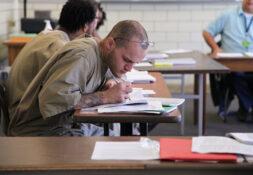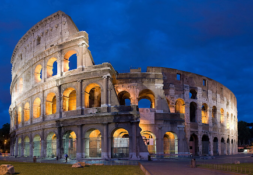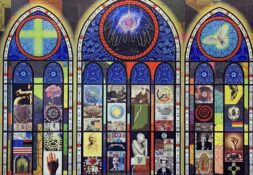Grace Urankar, Staff Writer
Editor’s note: This article is part one in a two-part series on the SYR dance. It presents the SYR through the rector’s point of view. The next issue of the Rover will include an article on the SYR from the students’ perspective.
Few institutions of higher learning boast a residential system quite like Notre Dame’s. For instance, the stay-hall policy provides a unique sense of fierce loyalty among a randomly-determined community. Furthermore, rectors serve in capacities ranging from building manager to spiritual advisor and beyond. The Rover turned to these experienced individuals for more information on one of the most time-honored dorm traditions on campus: the SYR.
A common vernacular among students, the SYR refers to a social event, typically a semi-formal dance, planned by the residence hall council. In recent history, SYR has become synonymous with “formal” or “all hall dance.” These linguistics were reflected in one rector’s response, who noted that SYRs were terminated in the 1997-1998 academic year. An article from The Observer published in 2000 recognized a campus-mandated change in terminology from “SYR” to “All Hall Dance,” most likely reflecting this change in policy and guest selection.
The term itself is an initialism, but its meaning today is contested. A few rectors provided the polite “set up your roommate,” while Reverend George Rozum of Alumni Hall interpreted the first word as “surprise.” The most recognized expansion is “screw your roommate.” This is a nod to previous generations, as the dance required an unknown date selected by a roommate; further, the dance itself usually took place within common areas of the residence hall. Given the absence of these practices, it is unclear why the name is still used today, and most rectors noted its misuse. “I never referred to our dances as SYRs,” said Reverend Pete McCormick, CSC, former rector of Keough Hall. “They were either Toga Dance or Keough Formal. I felt that the SYR term was a bit passé.”
Many rectors attended Notre Dame as undergraduates, and some had specific memories of their own SYR days. “I remember the in-hall wake, and that was fun,” said Terry Fitzgibbons, rector of Duncan Hall and a former resident assistant in Alumni. “One year, I recall my section buying an inflatable pool and $75 worth of styrofoam packing peanuts that somehow went with our theme. But, by the end of the evening, the styrofoam was everywhere in the dorm.”
Fitzgibbons also described some of the changes to SYRs from his undergraduate years: “I was around during the switch from ‘in-hall’ SYRs to no longer in-hall SYRs. I think that was a change for the better. When that policy did change, however—and I think it more or less coincided with the ban on hard alcohol—there was more uproar on campus about it than, say, the impending war in Iraq.”
Elaine DeBassige, rector of Farley Hall, shared that before each SYR, men used to buy a single rose for their date from a flower shop in LaFortune. She further described the decor from SYRs in Lewis Hall, from fluorescent writing on a black-papered hallway to a winter wonderland created from toilet paper. “Looking back, I can’t believe how many fire hazards we created with our decorations,” she remarked. “We were always hot sweaty messes by the end of the night… the winter wonderland did not pan out so well at the end of the night when toilet paper stuck to us!”
Chris Tarnacki, rector and former resident of O’Neill Hall, said one of his best memories from Notre Dame was the O’Neill Christmas Formal, held in the Main Building Rotunda. “I asked one of my friends to go to the dance with me, and she said she couldn’t because she wanted to go to a Better than Ezra concert, which was being held in Stepan Center that night,” he recalled. “I explained to her that an evening with me at the O’Neill Christmas Formal would be ‘better than Better than Ezra’ and she bought it. It was a ton of fun.”
Rectors described the execution of the SYR as student-driven, often planned by a dance commissioner and assisted by the hall council. Many rectors described their own role as simply approving dates, themes and use of hall funds. While many halls have unusual dance experiences, such as the “Dome Dance” for the reigning hall of the year, rectors reported a similar if not identical planning process.
Fitzgibbons’ Duncan Hall hosts the unique Highlander Highrise, which occurs at the Willis Tower in downtown Chicago each February. “That takes a lot of planning with bus companies, the Willis Tower sky deck and other partners,” he explains. “I lose sleep over how much money that dance ends up costing us in one night, but the guys really love it, and therefore, we’ll continue doing it as long as they want to (or as long as Chicago will have us).”
One inherently influential aspect of the SYR cannot be overlooked: the dance’s theme. Making or breaking the event, the dance’s theme can strongly determine attendance, attire and anticipated levels of fun. Some dances follow a constant theme, such as the Lewis Crush (a pre-spring luau) and the Stanford Hall Pirate Dance. At the same time, most SYRs vary and reflect current trends. Favorites from rectors included Disney and a “flannel” country theme.
Keenan Hall rector Noel Terranova illustrated the balance of themes with his hall’s dance calendar: September tent dance on North Quad with its sister dorm, Farley; Disco Roll dance at Skate USA in the fall; and the Keenan Revue Formal in the winter. Reflecting this summer’s release of the film adaptation of “The Great Gatsby,” this year’s tent dance had a Roaring 20’s theme. Terranova raved that “the September tent dance with Farley has been very, very classy and therefore my favorite.” At the same time, “Disco Roll is remarkably well-attended and enjoys a certain cache around campus,” he said, and is “certainly the Keenan favorite.”
When asked to change anything about the SYR experience, some rectors voiced complaints. Sister Mary Jane Hahner expressed concern over the insecurities of her residents in Pasquerilla West. “I wish my girls would be secure enough to just enjoy the experience rather than worry about what the guys think,” she said, “and that they would have fun dancing.”
Another rector noted the prevalence of alcohol. “At Notre Dame, I have observed a culture surrounding dances where intoxication is normalized for students,” said Walsh Hall’s rector, Annie Selak. “This applies across genders. It seems that students think that a different set of standards and values apply to dance nights. In reality, this mindset is quite harmful and results in many dangerous situations.”
However, most rectors shared positive sentiments. “It’s a great opportunity for the dorm to do something fun together,” said Rev. McCormick. “I think the current system benefits the dorm community.” The most common piece of contention surrounded the name itself: “Much has changed since ‘SYR’ was a relevant term,” explained Terranova. “SYR is an obsolete moniker.”
Despite its criticisms, it seems the SYR will continue to be reimagined with each generation of students, while continuing to be shrouded in mystery and layered with tradition. What could be more Notre Dame than that?
Grace Urankar is a senior Religious Studies major at Saint Mary’s College. Despite a lesser dorm culture across the street, she is a proud resident of Holy Cross Hall. Contact her at gurank01@saintmarys.edu






Leave a Reply